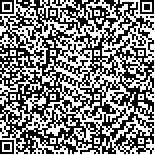| 引用本文: | 张志斌,秦思达,张佳,杜宁,张靖,任宏.脾多肽注射液增强胃癌大鼠脾脏免疫杀伤细胞活性的机制[J].中国现代应用药学,2020,37(6):675-680. |
| ZHANG Zhibin,QIN Sida,ZHANG Jia,DU Ning,ZHANG Jing,REN Hong.Mechanism of Spleen Polypeptide Injection Enhances Activity of Spleen Immune Killer Cells in Gastric Cancer Rats[J].Chin J Mod Appl Pharm(中国现代应用药学),2020,37(6):675-680. |
|
| |
|
|
| 本文已被:浏览 2333次 下载 1325次 |

码上扫一扫! |
|
|
| 脾多肽注射液增强胃癌大鼠脾脏免疫杀伤细胞活性的机制 |
|
张志斌1,2, 秦思达1, 张佳1, 杜宁1, 张靖1, 任宏1
|
|
1.西安交通大学第一附属医院胸外科, 西安 710061;2.榆林市第一医院胸外科, 陕西 榆林 719000
|
|
| 摘要: |
| 目的 探讨脾多肽注射液增加胃癌大鼠脾脏免疫杀伤细胞活性的机制。方法 取75只大鼠,其中60只用N-甲基-N-硝基-亚硝基胍(MNNG)诱导建立大鼠胃癌模型,采用随机数表法将其分为模型组和低、中、高剂量组;剩余15只健康大鼠给予正常饮用水为对照组。第36周起,低、中、高剂量组分别尾静脉注射0.06,0.18,0.54 mL·kg-1脾多肽注射液,对照组和模型组尾静脉注射生理盐水,每日1次,持续35 d。处死大鼠后观察胃组织病理学变化;对比各组脾脏指数、脾脏NK细胞杀伤活性;对比各组胃组织及脾脏中NK细胞占比及其表面活化受体(NKG2D)的表达、胃组织中NKG2D配体组织相容性复合体Ⅰ类相关基因A (MICA) mRNA及蛋白相对表达量。结果 模型组胃黏膜固有层有大量炎性细胞浸润,癌化细胞多,黏膜腺体排列严重紊乱;低、中、高剂量组胃黏膜固有层炎性细胞减少,黏膜腺体排列紊乱,癌细胞数量减少,其中中剂量组减少最为显著;脾脏指数、脾脏NK细胞杀伤活性、脾脏及胃组织中NK细胞占比及NKG2D表达、MICA mRNA和蛋白相对表达量组间比较,对照组最高,中剂量组其次,低、高剂量组稍低,模型组最低,并且除低、高剂量组之间比较差异无统计学意义外,其他每2组间比较差异均有统计学意义(P<0.05)。结论 脾多肽注射液可增强胃癌大鼠脾脏NK细胞杀伤活性,其中0.18 mL·kg-1的脾多肽注射液增强效果最佳,可能与促进NK细胞增生、上调NK细胞活化性受体NKG2D及其配体MICA mRNA和蛋白表达有关。 |
| 关键词: 脾多肽注射液 胃癌 脾脏 免疫杀伤细胞活性 |
| DOI:10.13748/j.cnki.issn1007-7693.2020.06.007 |
| 分类号:R285.5 |
| 基金项目: |
|
| Mechanism of Spleen Polypeptide Injection Enhances Activity of Spleen Immune Killer Cells in Gastric Cancer Rats |
|
ZHANG Zhibin1,2, QIN Sida1, ZHANG Jia1, DU Ning1, ZHANG Jing1, REN Hong1
|
|
1.Department of Thoracic Surgery, the First Affiliated Hospital of Xi'an Jiaotong University, Xi'an 710061, China;2.Department of Thoracic Surgery, the First Hospital of Yulin City, Yulin 719000, China
|
| Abstract: |
| OBJECTIVE To investigate the mechanism of spleen polypeptide injection enhances the activity of spleen immune killer cells in gastric cancer rats. METHODS Seventy-five rats were selected and 60 of them were induced with N-methyl-N-nitro-nitrosoguanidine(MNNG) to establish rats gastric cancer models, which was divided into model group, low, medium and high dose groups by random number table method. The remaining 15 healthy rats were given normal drinking water as control group. From 36th week, the low, medium and high dose groups were injected intravenously 0.06, 0.18, 0.54 mL·kg-1 spleen polypeptide injection, and the control and model groups were intravenously injected with normal saline once daily for 35 d. After the rats were sacrificed, the histopathological changes of stomach tissues were observed. The spleen indexes and the killing activities of NK cells in the spleen of the 5 groups were compared. The expressions of NK cell proportion and its surface activating receptor(NKG2D) in the stomach tissues and spleens, the relative expressions of NKG2D ligand histocompatibility complex class I related gene A(MICA) mRNA and protein in stomach tissues of the 5 groups were compared. RESULTS The gastric mucosal lamina propria of the model group was infiltrated by a large number of inflammatory cells, and the cancerous cells of the epithelial cells were obvious and the mucosal glands were seriously disordered. In the low, medium and high dose groups, the number of inflammatory cells in the gastric mucosal lamina propria and the cancer cells were reduced, among which the middle dose group had the most significant reduction. The spleen indexes, the killing activities of NK cells in the spleen, NK cell ratio and NKG2D expressions in spleen and stomach tissue, the relative expressions of MICA mRNA and protein in gastric cancer tissue were compared between each 2 groups, and the results showed that the control group were the highest, the medium dose group the second, the low and high dose groups slightly lower, and the model group were the lowest. There were significant differences between each 2 groups(P<0.05), without differences between the low and high dose groups. CONCLUSION Spleen polypeptide injection can enhance the killing activity of NK cells in the spleen of gastric cancer rats. The 0.18 mL·kg-1 spleen polypeptide injection has the best enhancement effect, which may be related to the promotion of NK cell proliferation, up-regulation of NK cell activation receptor NKG2D and the mRNA and protein expressions of its ligand MICA. |
| Key words: spleen polypeptide injection gastric cancer spleen immune killer cell activity |
|
|
|
|
